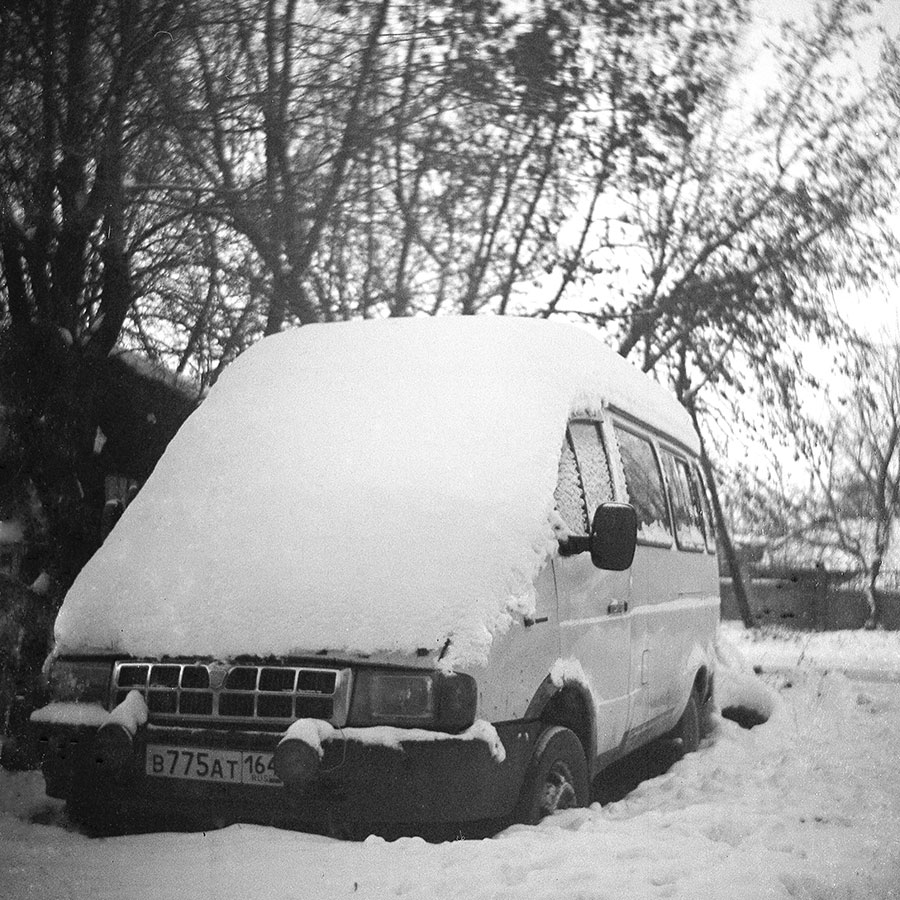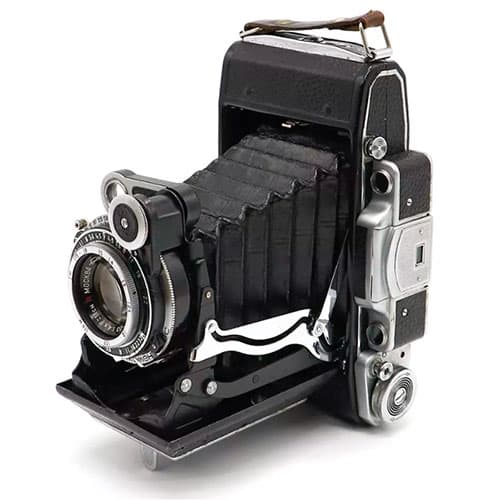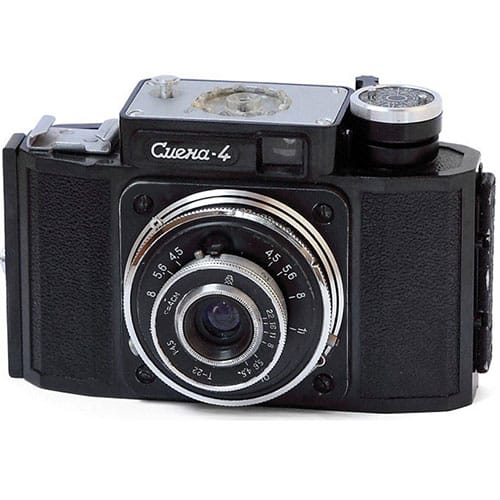Lubitel-166
Lubitel-166 is actually the most technically sophisticated twin-lens camera made in the USSR. But unfortunately, this camera was not too reliable, and as a result, it was replaced by a camera called Lubitel-166b.

Obviously, the Lubitel-166 was an ambitious attempt by the LOMO factory to create a more or less advanced TLR camera. A lot of useful innovations have appeared in the camera, such as a frame counter, combined shutter cocking and film advancing, more reliable back cover lock, and so on.
Lubitel-166u Specifications
- Type: 120 film TLR camera
- Manufacturer: LOMO plant
- Production period: 1976-1981
- Format: 6x6cm on 120 film
- Lens mount: fixed lens
- Taking lens: T-22 f4.5/75
- Viewing lens: f2.8/75
- Shutter: leaf shutter with speeds from 1/15 to 1/250 sec.
- Viewfinder: waist-level finder
- Lighmeter: none
- Flash synchronisation: sync socket “X”
- Selftimer: mechanical
- Weight: 608 grams
Unfortunately, in Soviet times, plants did not know how to create both sophisticated and reliable equipment, and therefore the Lubitel-166b was a much simpler camera.

Lubitel-166 was produced at the Leningrad Optical-Mechanical Association (LOMO) from 1976 to 1981.

Like all other Soviet twin-lens cameras, this medium format camera is made of plastic of quite high quality (especially by Soviet standards).
As we said before, unlike previous models, the Lubitel-166 frame rewind is combined with the shutter cocking. The shutter button is also made a little more complicated and is similar to the button of the Vilia camera.

In addition, the camera finally got a frame counter, and now the photographer does not need to look in the red window and control the rewind of the film visually.
The Lubitel-166 camera is equipped with a non-removable Triplet T-22 4.5/75 lens which has a simple single-layer coating. The upper lens has a large aperture and is 2.8, which greatly simplifies focusing.


Like all previous cameras, Lubitel-166 uses 120 film and shoots in 6×6 cm format. No changes were made to the shutter either. Lubitel-166 is equipped with a leaf shutter with speeds of 1/15, 1/30, 1/60, 1/125, 1/250, and B.

But of course, this camera also had some noticeable changes compared to older models. For example, this Soviet medium format camera has a shoe for attaching a flash and other photo devices. And as you can see from the photos, this is not a cold shoe, but a real hot shoe.

But there were some simplifications in comparison with older models (do not forget, this is a Soviet camera, it cannot do without simplifications). For example, this TLR does not have a self-timer. That is, if for some reason you really like to take selfies on Soviet cameras, then this will be a big drawback for you.


The camera Lubitel-166 very clearly shows the Soviet tendencies to simplify everything that can be simplified. For obvious reasons, the Soviet Union did not know how to create something simultaneously constructively complex, high-quality, and reliable.
Trying to add any complications and improvements, Soviet engineers were faced with brutal Soviet reality. Poor people, state control over everything, and low-quality control at the factories did their job, and the Lubitel-166 camera was replaced by a simpler version called Lubitel-166b. Thus, the camera returned to almost the same design as in the Lubitel-1 and Lubitel-2 cameras.

If you want to purchase an interesting Soviet medium-format twin-lens camera, the first models of this brand will be the best solution. These cameras have the same features as Lubitel-166, but because of the extreme simplicity of the design, there is less risk that the camera will break.
Nevertheless, Lubitel-166 is also a very good camera. If you find a working copy (or repair the camera after purchase), you will get a rather interesting Soviet device that can take really interesting photos.
Don’t look at the simplicity of this soviet TLR camera, this is not a Holga-type toy camera, this is a real TLR. The camera is made of cheap but good quality plastic and the lens is made of real glass.
Medium format film combined with a triplet lens can allow you to create truly atmospheric photos.
LUBITEL-166 PHOTOS













